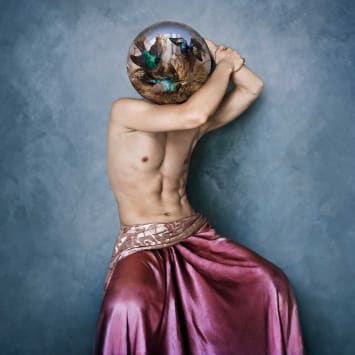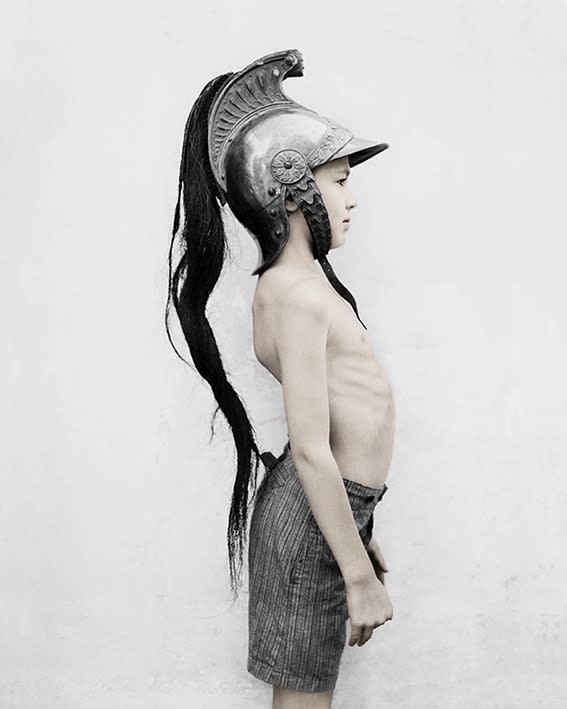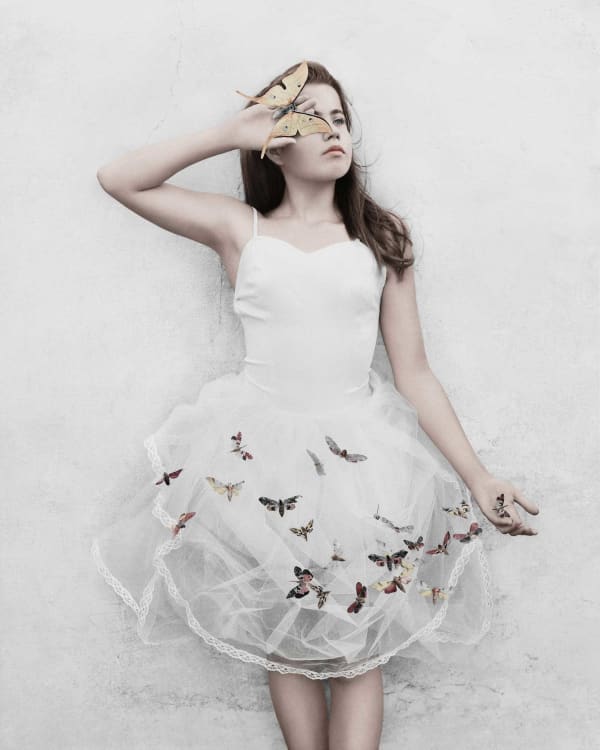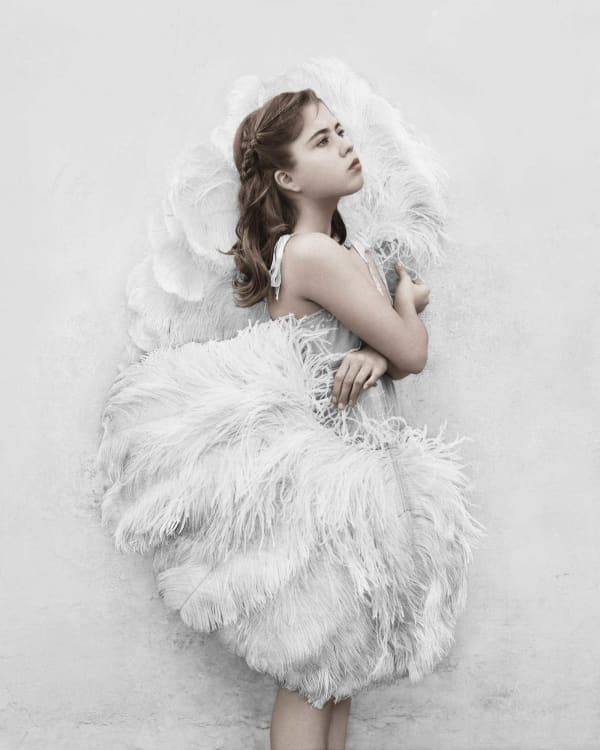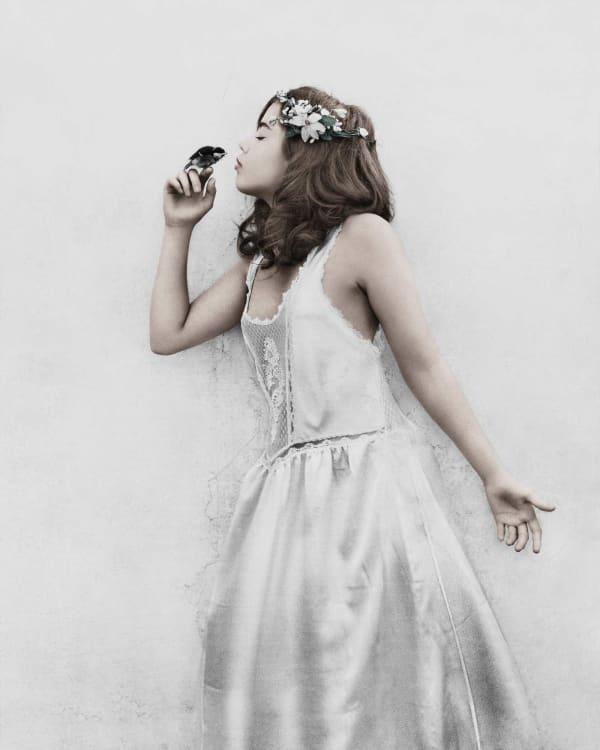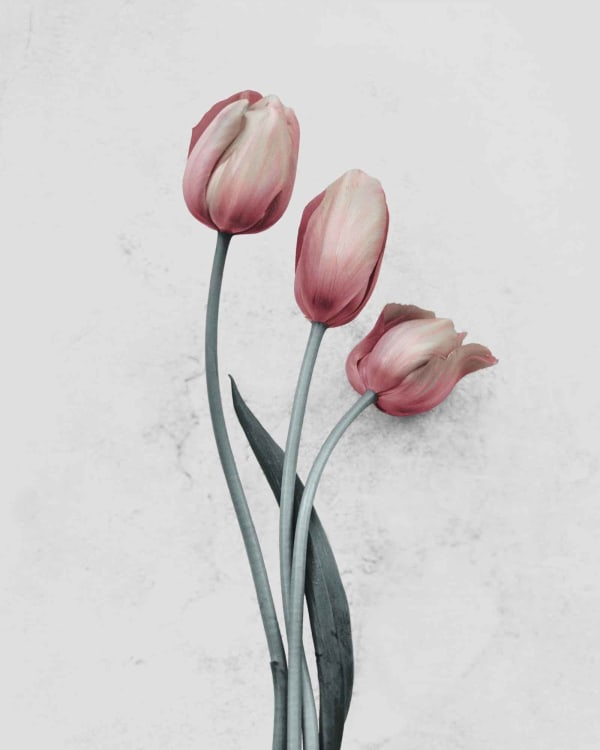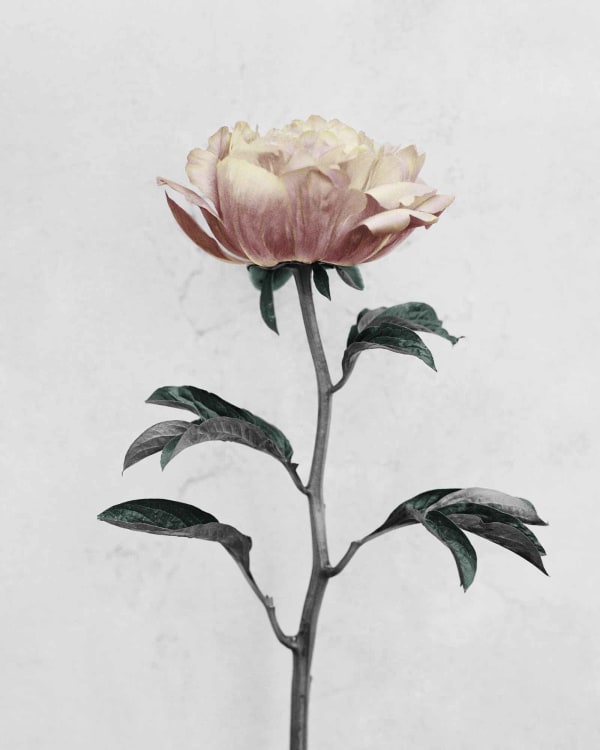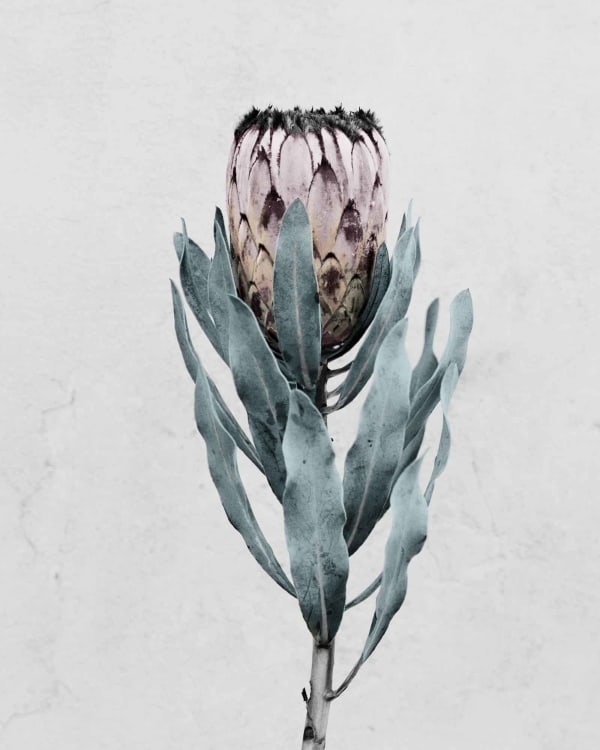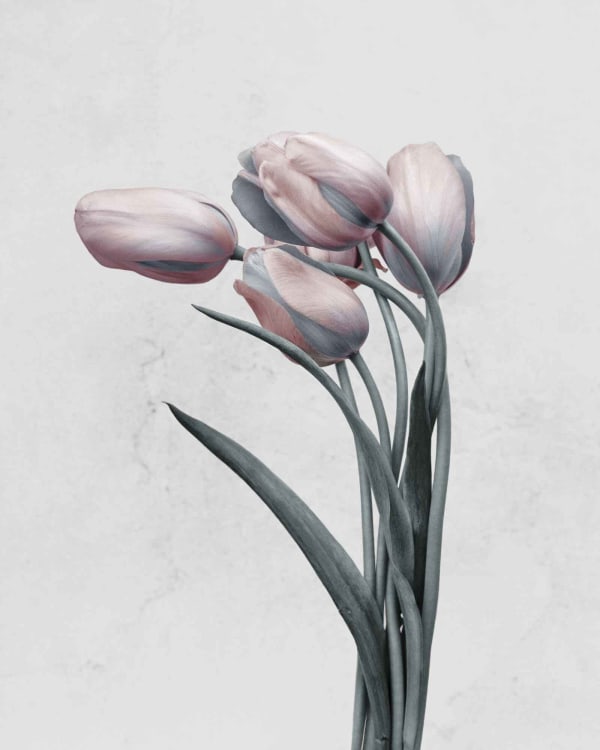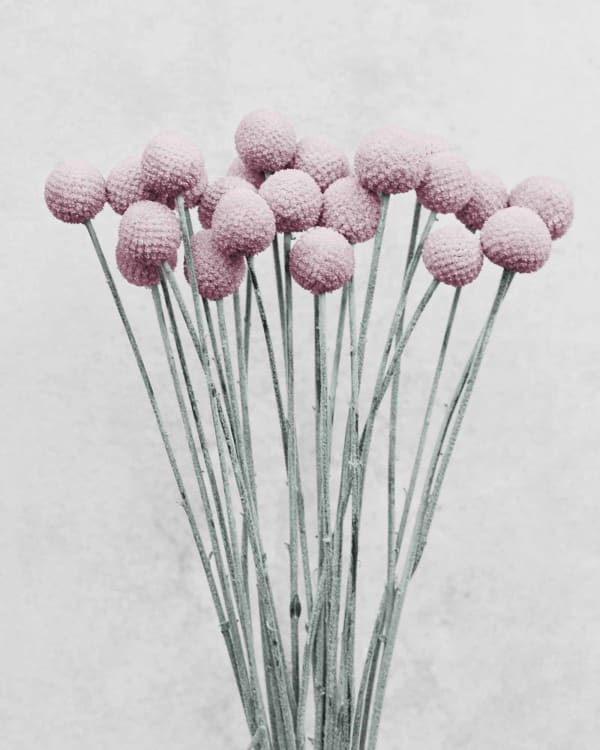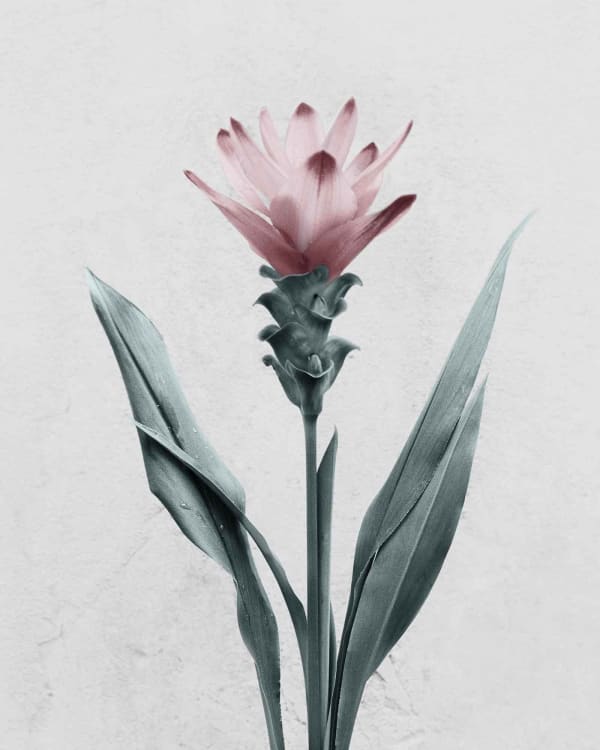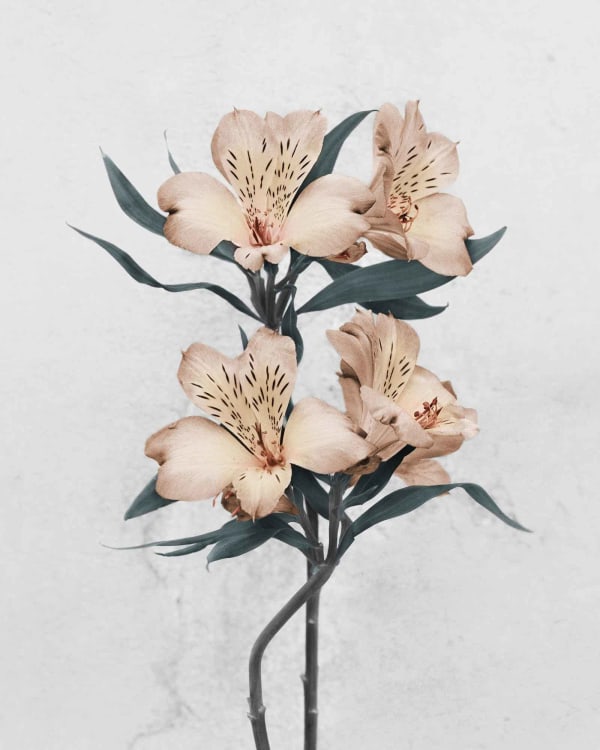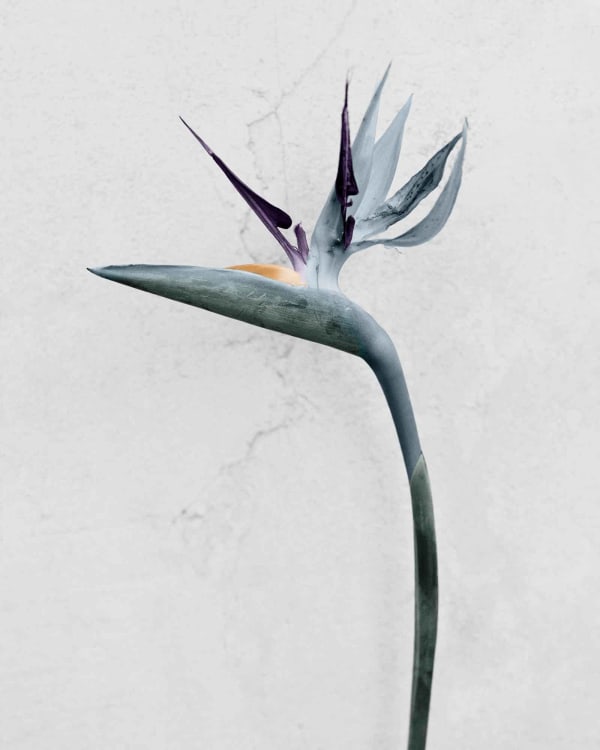-
"I don’t really fit the classic description of a photographer. Rather, I use photography as a tool to tell stories. Even though my images are set in a studio and the scenes are built from scratch I don’t like fake emotion from the model, so my main focus is to create an image that is believable, and evokes an emotion that feels real. My work always has an underlying tension which may either be diffused or accentuated by my aesthetic approach."
Vee Speers -
Video credit: The LA Review of Books
-

-
Premières Oeuvres
2001 - 2004 -
BORDELLO
2001Vee Speers moved from Australia to the French capital city in 1990. After a decade living in Pigalle, the famous Paris' red light district, Speers set her studio in the walls of her neighborhood last surviving brothels. There, she brought back to life the subversive and decadent Parisian nightlife of the early 20th century. In these lavish and opulent interiors, she created seductive nudes and portraits tinted with pre-war darkness. In line with Man Ray and Brassai's aesthetic, her photographs offer a sensual exploration of the female form and are produced using a hand-rendered Fresson carbon process. The hazy outlines of the smoky black and white figures seem to dissipate in the idealistic nostalgia of past times as envisionned by the artist's mind.
-

-
" The twilight of Vee Speers’ great photos of beautiful women causes the viewer to merge with the surroundings of the image and enter a kind of dream-like vision of an often sordid reality. Shapes lose definition and imagination overweighs perception. Real life is left behind.. . . . the boundaries between subject and photographer become more and more indistinct.
She shows beauty where beauty can be terribly absent."
Karl Lagerfeld
-
PARISIANS
2004While investigating for Bordello, Speers met an alternative Paris, its characters living outside of established conventions. These non-conformists inspired Speers to create the more playful and theatrical series of portraits entitled "Parisians"." Everyone is unique, and I believe that differences should be celebrated. "
Vee Speers -
 Jean-Claude Dreyfus
Jean-Claude Dreyfus -
THE BIRTHDAY PARTY
2007 -
While Parisians consisted in documenting what her models openly displayed through their outfits and props, The Birthday Party, which was started concomitantly, focused on the externalisation of childhood's fantasy worlds. Through games of dress up, models encompass notions of performance and play. This series of timeless portraits offers a rich and tangible illustration of youth's last imaginary landscapes and inherent narratives before teenagehood wipes these off.
The Birthday Party is one of Speers most iconic series, a pivotal body of work which was inspired by the artist's youngest daughter and her friends when she was just 8 years old, as well as the artist's unique childhood in Australia. It marks the first chapter of a trilogy including Bulletproof and Dystopia.
-
"Susan Bright, who wrote the introduction to my book, pointed out that it might be self portrait. As a child, sometimes I felt like singing and performing, other times I was shy. It was all about my emotions and I suppose my experiences were similar to other kids. Sometimes you feel insecure and alone, while other times you feel like the most popular kid in school. School can be tough, like growing up in a big family can be tough. You’ve got to be on your guard. I think The Birthday Party was about me and then my own kids, and then people in general."
Vee Speers
-
Imagination Takes Flight
Edward Kiersch, 2021It's a unique form of travel. One from a land of innocence and carefree joys to a subterranean haunt of bafflement and foreboding. Such an exploration demands an insightful Eye, an acute sensitivity, for a Birthday Party (2007) can be like an Expressionist painting-a canvas revealing waves of doubt together with youthful flights of imagination.
No ordinary celebration, it is a Sturm und Drang parade of unrest- glum-faced young girls appear in fishnet stockings, armed with weaponry and carrying dead animals. Young boys wearing gas masks are clearly ready to grapple with an unknown future. These 8-year-old boys, bare-chested, and hoping to project an air of defiance, are equally reflective of dystopia. They have been betrayed, guests at a party with little mirth and assurance that all will be well. Here there's only the recognition these celebrants are at Childhood's End. That they're poised on a perilous precipice, about to face a disfigured world morphing towards the bleak and bizarre.Youthful hope would later be palpable, resilient and powerful. Like a Phoenix, youngsters would fly, seize their moments in time and space, display the virtues that make them inviolable. How would they discover trust and magic- navigate spectres in a world turned upside down, rife with dead rats and troubling grayness?
Impeccably surreal, erudite, and ever provocative, Paris-based photographer Vee Speers habitually probes, jabs and subverts with her incisive, unfettered questioning. Driven to pierce perfection-the layered makeup, wigs, and 1960s outfits worn by her rat and mask-carrying children- Speers whips us into a realm of contrasts, contradictions, and conflicts-a shifting, kaleidoscopic reality of grotesqueries edged with lyricism and beauty. -

An Iconic Picture
"This is the only picture in the series that I sketched before I started, and it came out exactly the way I had drawn it. I found the outfit from a dance show she'd done at school, a kind of swingy skirt thing. Then I wanted a big Marge Simpson hairdo, something totally exaggerated to go with the circles and the balloon. A hairdresser came in and built it. He blew up a regular balloon and pasted some hair of the same colour on to it, like papier-mache. We twisted her hair around the balloon, and got it on her head. That was the hard bit. I had to get her in the right position, have her stick her neck out. It was a bit uncomfortable so I worked really fast: I wanted the photo in the can in five minutes. She's only nine."
Excerpt from The Guardian -
THIRTEEN
2012 -
Following The Birthday Party, Vee Speers took a closer look at her daughter’s transformation at the age of 13. Departing from childhood, she expressed a desire for independence conveyed through a choice of symbolic attires and accessories. Whether she’s spreading her feather wings, wearing blooming orchids, letting bandages lose, or depicted as Leda, or a crow whisperer, her daughter is depicted in a transitional state, taming her fears and embracing the future.
-

-
 Vee Speers, Untitled #20, 2013
Vee Speers, Untitled #20, 2013 -
BULLETPROOF
2013 -
Six years after The Birthday Party, Vee Speers asked the same children to pose again in front of her camera as they transformed and faced the challenges of adolescence. While still soaked in childhood's fantasy, her characters' innocence and playfulness is slowly drying. Their imagery turns arid, dystopian, and calls upon their survival instinct. They become Lords of the Flies meets Peter Pan's Lost Boys heroes, gladiators, steampunk warriors and masked survivors of darker, primeaval tales. Despite these new challenges, they appear to be forming an invicible army.
-
DYSTOPIA
2017 -
 Vee Speers, Untitled #16, 2017
Vee Speers, Untitled #16, 2017 -
For the last part of the trilogy, Speers invents her own Dystopia, speaking directly of a world that has come unhinged. Yet even if the sun goes cold and fear is present, her imagery speaks of freedom. The concerns, troubles and every existing fear cross like arrows the bodies of these young and empowered men and women. No fixed identities, no determined genders; the characters are heroes, shamans, fighters who appear invincible. They seem to come straight out of some madness, a circus or a poem, from a distant past or from the future. Maybe they come from a new mythology, from Mad Max or from a Tim Burton movie. This series is the end of a cycle as Speers brings a story which started ten years ago to a conclusion. A story for which she took photos of children for The Birthday Party then six years later, with those same children in the midst of their adolescence for Bulletproof. Dystopia is the last act of this beautiful story.
-
BOTANICA
2016 -
From its early occurrences with Henry Fox Talbot or Karl Blossfeldt aiming at documenting various species, until the XXth century’s development drawing new parallels with the human form, the floral theme has played a predominant role throughout the history of photography. With Botanica, Vee Speers explores this genre following the same codes she applies to her human portraits: she shoots in black and white in front of a plain background, and colors her subjects in post-production according to her own feelings. Using an aetheral palette, each image is a distant reminder of reality crafted in a dreamy secret garden, like an invitation to the artist's very own haven of peace.
-
-
 Vee SpeersBotanica #12 (Tulipa Gesneriana), 2016
Vee SpeersBotanica #12 (Tulipa Gesneriana), 2016 -
 Vee SpeersBotanica #13 (Heliconia Bihai), 2016
Vee SpeersBotanica #13 (Heliconia Bihai), 2016 -
 Vee SpeersBotanica #16 (Paeonia), 2016
Vee SpeersBotanica #16 (Paeonia), 2016 -
 Vee SpeersBotanica #17 (Protea Cynaroides), 2016
Vee SpeersBotanica #17 (Protea Cynaroides), 2016
-
 Vee SpeersBotanica #18 (Tulipa Gesneriana), 2016
Vee SpeersBotanica #18 (Tulipa Gesneriana), 2016 -
 Vee SpeersBotanica #19 (Craspedia), 2016
Vee SpeersBotanica #19 (Craspedia), 2016 -
 Vee SpeersBotanica #21 (Iris Germanica), 2016
Vee SpeersBotanica #21 (Iris Germanica), 2016 -
 Vee SpeersBotanica #22 (Pennisetum), 2016
Vee SpeersBotanica #22 (Pennisetum), 2016
-
-
PHOENIX
2020 -
 Vee Speers, Untitled #1, 2020
Vee Speers, Untitled #1, 2020 -
TRANSCENDENCE
2024 -

-
-

Vee Speers
Globe, 2023C-type print
90 x 90 cm
35 3/8 x 35 3/8 in
Edition of 5 plus 2 artist's proofs -

Vee Speers
Gaia, 2023C-type print
120 x 120 cm
47 1/4 x 47 1/4 in
Edition of 4 plus 2 artist's proofs -

Vee Speers
Orchids, 2023C-type print
120 x 120 cm
47 1/4 x 47 1/4 in
Edition of 4 plus 2 artist's proofs -

Vee Speers
Crown, 2023C-type print
120 x 120 cm
47 1/4 x 47 1/4 in
Edition of 4 plus 2 artist's proofs
-
-
Making of Thisltes, 2024
This young embodies youth and our future. He is looking down, his gaze heavy with preoccupation. He is crowned by what can be perceived as Christic allusion with prickly thistles replacing dried thorny branches. While Speers shares her concerns for the future of our planet, the choice of green and blue flowers in full bloom, infused with life and hope, suggests a positive alternative.
The online reading room offers you a retrospective introduction to Australian-French artist Vee Speers' creative process and statement spanning the past two decades, showcasing making-of videos, quotes and anecdotes.

